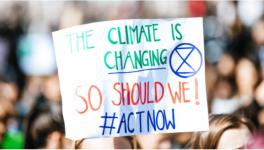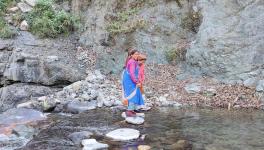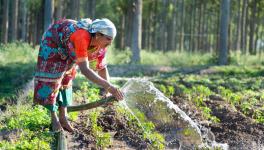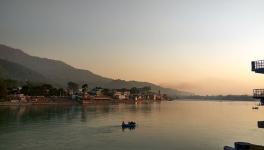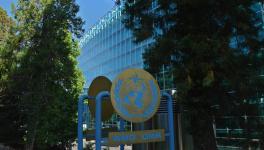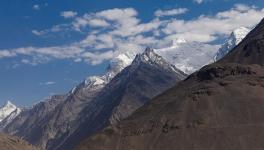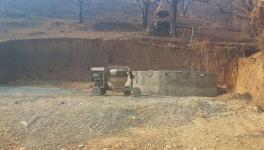IPCC Climate Report: Less Shock, More Awe and Anxiety
The Intergovernmental Panel on Climate Change (IPCC) – a UN body – released the first of a series of reports to be published under its Sixth Assessment cycle. This report on 'The Physical Science Basis' comes from Working Group-I (IPCC/AR/WG-1) and is always the first to be released in the series, which includes other such reports to be released over the next couple of years.
The Report by the IPCC/AR6/WG-1 has been greeted by media, both in India and internationally, as presenting shocking revelations of the immediacy and severity of climate change. Consistent observers and scientists following IPCC assessment reports more closely, however, would feel less shocked by the Report’s findings, since most of these have been highlighted or at least inferred by many earlier scientific studies and reports by different agencies. At the same time, the Report’s headline findings, when elaborated with examples and likely future scenarios, are or should indeed be alarming, and provide a strong push to immediate and concerted action by nations of the world acting in concert and ensuring appropriate, equitable national actions to reduce national and global emissions. It should be remembered that the IPCC is a scientific body, but its assessment reports are also endorsed by governments, as is true of AR6/WG1.
The next global climate Summit, due to take place in November in Glasgow, Scotland, is in any case expected to arrive at commitments by countries to much more ambitious emission reduction commitments than under the Paris Agreement. Does the world – especially the developed nations – dare to expect to see the writing on the wall and pledge deeper emission cuts, or will we see them continue to hide their responsibility under global targets?
Given the startling evidence before our eyes – floods and extreme rainfall seen recently over the summer in the northern hemisphere and especially the heat waves and wildfires experienced in Europe, USA and Canada. The devastating damage even in these developed countries should spur countries, especially India, to take urgent if not immediate steps domestically to reduce climate impacts and build resilience across sectors.
Status and Prognoses
As noted earlier, most of the estimates presented in the Report are along expected lines, looking forward from the Fifth Assessment Report read with the three Special Reports since then, especially on the cryosphere and oceans, and on the status and projections vis-à-vis the aspirational target of limiting global temperature rise to 1.5 degrees C which was introduced at Paris. At the same time, AR6/WG1 strengthens its findings and prognoses by raising the degree of confidence or certainty of the scientific understanding regarding different parameters based on more evidence, improved analytical tools and better modeling. This is very important since IPCC, being a scientific body, insists on rigour in arriving at conclusions, which is a very big and weighty word in science, and has therefore always been careful in reporting them in degrees of certainty or confidence. The Report does, however, also have some surprises.
AR6/WG1 thus speaks of the measured increase in carbon dioxide and other atmospheric greenhouse gas (GHGs) concentrations as now being “unequivocally caused by human activities,” leaving little room for deniers to point to scientifically stated uncertainties (although evidence and logic have never prevented purveyors of alternative facts and post-truth claims).
The Report tells us that global average temperatures are about 1.09 C higher in 2011-20 than between 1850 and 1900 with land temperatures being around 0.5 C higher than of the oceans. We have seen over the past month or two just how bad the effects of that level of temperature rise can be, warning us of what things can look like at a two degrees C rise in temperature. Global surface temperatures have risen more since 1970 than during any other 50-year period over roughly the past 6,000 years. The Report predicts that, at current medium-level emissions control scenarios, temperatures will keep increasing, exceed both 1.5 C and 2 C targets, and are likely to reach 2.1-3.5 C by 2100.
Atmospheric CO2 concentrations are now at a very dangerous 410 ppm (parts per million), with high levels of other potent GHGs, especially methane and nitrous oxide, the former mostly related to animal and human wastes, and the latter to agriculture and coal power generation. All these gases are now at their highest levels in between 8,00,000 and two million years. The Report further warns, more sharply than earlier, of the additional harm that these GHGs can do if unchecked. Even more worrying, the Report warns that the ability of terrestrial sinks on land, forests and oceans will decrease with time, meaning that emissions reductions should be more than calculated at present rates of absorption.
Arctic ice, glaciers and snow melt in the northern hemisphere have all shown steady melting trends, but somewhat reassuringly, Antarctic ice has not shown any significant melting trends between 1979 and 2020. The global mean sea level has risen by over 0.2 metres since 1900 but, more worryingly, is now doing so at accelerated rates, at 1.3mm/yr till 1970, 1.9mm/yr during 1970-2006, and 3.7mm/yr since then.
The climate changes being brought about now are more, and have occurred more rapidly than the same many thousands of years ago. Hot extremes and heat waves exacerbated by urbanisation, along with droughts, have increased in frequency and intensity since the 1950s, while cold extremes and cold waves have declined. Similarly, extreme rainfall events have occurred more frequently and with greater intensity. Tropical cyclones are also showing rising trends in most regions. The sea-level rise is also likely to bring about severe coastal erosion and inundation and, combined with badly planned urbanization, threatens hundreds of millions of lives and livelihoods in the coming decades.
The Report predicts a bleak future, in that even if the world achieves net zero emissions, i.e. where volume of emissions equals absorption by terrestrial sinks, which is the current global target for 2050, further temperature rise may be prevented but other climate impacts would continue over hundreds of years unless negative emissions, i.e. absorbing more greenhouse gases than are emitted through technological means if necessary, are put in place.
Where to Now?
Some frustrated commentators have already remarked that AR6/WG1 has told us what is happening, but not what to do about it, forgetting that that job is assigned to AR6/WG3. Yet, the present Report already contains pointers, although it stays away from the political territory of which countries should do what.
In even more stark terms than in AR5, and with improved calculations, AR6/WG1 states the problems explicitly by using the metrics of cumulative emissions and global carbon budgets, meaning total emissions now accumulated in the atmosphere in relation to how much carbon dioxide the atmosphere can absorb and hold for a given global temperature rise. This concept was forcefully advanced earlier, both in India and abroad by researchers in the Peoples Science Movement, some then working at different institutions, although unfortunately eschewed by negotiators especially from developed countries who saw it as problematic because it hurt their interests. AR6/WG1 underlines why!
The Report states that ”reaching net zero… CO2 emissions is a requirement to stabilize human-induced global temperature increase at any level, but limiting global temperature increase to a specific level would imply limiting cumulative CO2 emissions to within a carbon budge.” The carbon budget from the industrial era till now or historical emissions, over 70% of it caused by developed countries, has resulted in climate changes as we now witness, and the budget for the future will determine where we end up. Therefore, it is this remaining carbon budget, and the contribution of each country to it, that should govern global emissions reduction arrangements, while also taking into account historical emissions, rather than simply national emissions going forward which is the dominant perspective thrust upon the global negotiations by the developed countries led by the US.
It is beyond the scope of this article to present the detailed calculations for this but, using this yardstick, it is clearly incorrect to demand as developed countries are doing, that ALL countries should aim for net-zero emissions by 2050. In fact, going by AR6/WG1, the target ought to be brought forward to, say, 2035 for developed countries, leaving time for developing countries to catch up with financial and technological assistance from the developed nations. Will this happen at Glasgow?
Finally, it needs repeated emphasis that India has done nothing, not even made proper vulnerability assessments or adaptation plans, to tackle the climate impacts we are already witnessing, even as we go to press, such as river flooding, landslides and mud-slips and urban flooding, all due to extreme rainfall, including cyclones, compounded by unplanned and unregulated (nowadays deliberately de-regulated) real estate, commercial and industrial construction and other activities, causing enormous annual loss of life, livelihoods, habitats and incomes. Effects on agriculture, horticulture, fisheries etc have not even been looked at yet. These doubly man-made disasters of climate change and poorly planned development call for massive investments and capacity-building in governance to tackle them. Yet the government has not even woken up to this reality.
The writer is with the Delhi Science Forum and the All India People’s Science Network. The views are personal.
Get the latest reports & analysis with people's perspective on Protests, movements & deep analytical videos, discussions of the current affairs in your Telegram app. Subscribe to NewsClick's Telegram channel & get Real-Time updates on stories, as they get published on our website.









